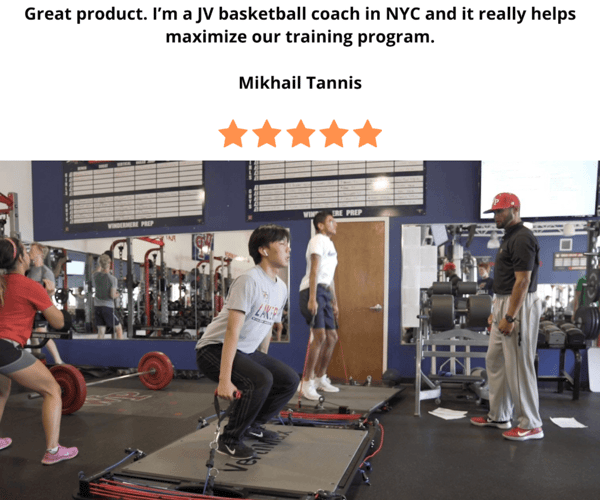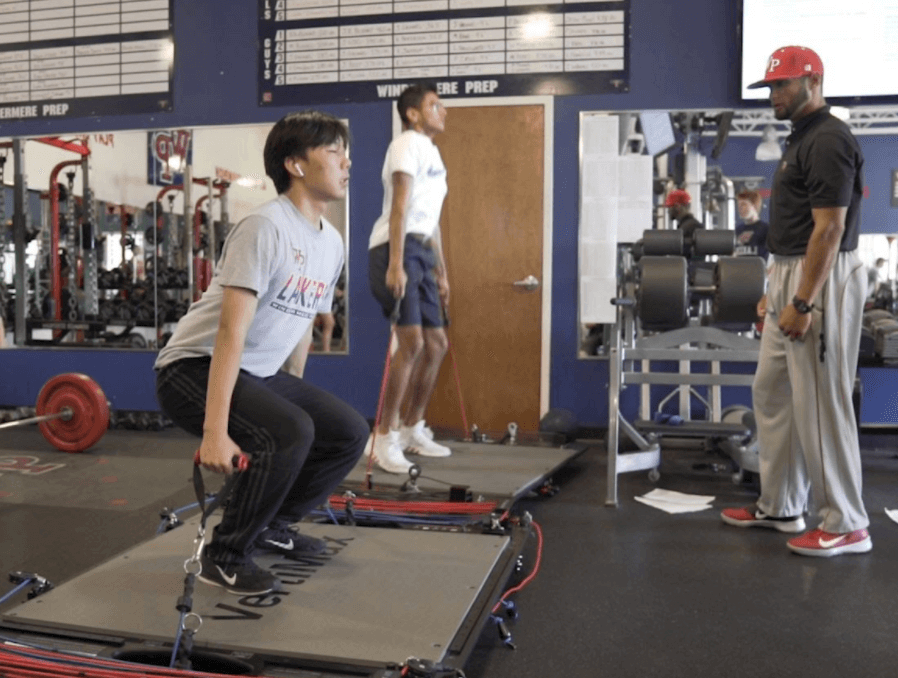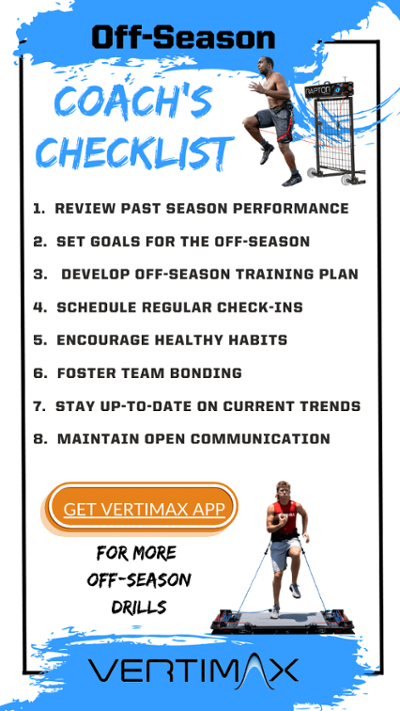The typical youth sports team places a heavier emphasis on competing, as opposed to practicing technical skills related to their sport or working on their physical development. The problem with this can be two-fold; it can prevent athletes from reaching their peak athletic performance ability and lead to potential injuries down the road.
In fact, experts recommend youth athletes should practice or train 60-70% of their time when playing their sport, with 30% of their total time spent working on their physical development.
With sports specialization taking place earlier and earlier for youth athletes, coaches and parents need to continue to be intentional about athlete participation. Not only should players, parents, and coaches be careful about potential injuries that can occur from early specialization. Research shows an excessive focus on early intensive training and competition at young ages rather than skill development can lead to overuse injury and burnout. Burnout resulting from chronic stress causes young athletes to cease participation in a previously enjoyable activity.
Consideration should be given for each athlete’s individual development plan. Readiness for sport, where one evaluates the athlete’s level of physical and psychological development in relation to the physical requirements of the sport should create more informed decisions for participation.
So how should parents and coaches go about structuring and enacting a long-term development plan for youth athletes? One of the best resources to help guide parents and coaches is the Long Term Athlete Development Model (LTAD), which has been adopted by many athletic governing bodies as an effective way to program youth development for reducing injury risk and increasing athletic potential. Let’s take more of an in-depth look at the stages of the model and how you may be able to implement some of the ideas in your youth athlete’s training and development.

9 Stages Of Long Term Athletic Development Model (LTAD)
The Long Term Athletic Development Model is a system designed to counteract the “over-compete and under-train” programs that seem to be ubiquitous in today’s youth sports. It allows coaches and teams to employ a system of training, competition, and recovery based on developmental age or maturity level, as opposed to the actual age of the player. There are 9 stages of the LTAD model, which are meant to be implemented across the various stages of growth during a youth athlete’s involvement in sports. Let’s examine the different stages and how you can go about executing them.
Stage 1: Active Start
The goal of the Active Start phase is to introduce sports in a way that is fun to the athlete and reinforces that exercise and physical activity should be a part of their daily lives. Typically, this stage takes place up until the age of 6, where adults supervise any activity, but no sport specific coaching should be taking place. This stage should be used by the children to learn traditional movement patterns and experience happiness from participating in the physical activity.
Stage 2: Fundamentals
The Fundamentals Stage is where there should start to be a little more structure for youth athletes, as coaches can begin to teach athletic movement in an organized setting. Agility, balance, coordination, and speed are all key aspects to be prioritized during this stage of development. Strength development can also be initiated at this level, with flexibility and range of motion being a priority while performing strength exercises. Coaches and parents should look to begin these activities from ages 6-9.
Stage 3: Learning to Train
The Learning to Train Stage is where youth athletes should continue to hone their basic movement and athletic capabilities, while starting to enhance their sport specific skillset. This stage takes place from 9-12 in boys and 8-11 in girls. Multi-sport activity is still encouraged during this phase, but a decrease in the number of sports athletes participate in should begin to occur by the end of this stage. Also, secondary components of training and development should be introduced, such as nutrition and mental conditioning skills.
Stage 4: Training to Train
The Training to Train Stage is the phase where the majority of growth and development usually takes place, as physical growth tends to increase rapidly during this time (11-16 years old). It is also the stage where youth athletes can incur the highest risk of injury, as the accelerated growth can leave their muscles and bones weak. Therefore, training should be highly individualized and monitored by coaches and parents. Training can begin to focus on the increase of speed and strength for athletes, while also increasing the number of sport-specific activities players take part in.
Stage 5: Learning to Compete
The Learning to Compete Stage (15-18 years old) is a period where athletes should start to specialize in their sport of choice and participate in more competitive situations. Athlete’s motor skills will become more apparent during this stage and athletes should be split into sports that will be more conducive to their skillset. This stage should also be where coaches attempt to combine all aspects of development into their program (physical, mental, cognitive, emotional).
Stage 6: Training to Compete
During the Training to Compete Stage (17-21 years old) athletes will continue to build to their sport-specific skills and prepare for high-level competition. The mental training to deal with competition should ramp up for athletes, as the stress and stakes of the events increase. Monitoring of the athlete by a Performance Team is critical in this phase to maintain the athlete’s capabilities at a high-level. Training can increase to 15 sessions during a week and their sport’s season can last year-round.
Stage 7: Learning to Win
At the Learning to Win Stage, athletes usually consider themselves “full-time athletes”. Athletes are now dedicating themselves to competing at the highest levels, with teams and organizations fully committing to helping them perform at their peak. Training should be very deliberately coordinated in order for athletes to achieve maximum performance.
Stage 8: Winning for a Living
During the Winning for a Living Stage, athletes consider themselves professionals and will train towards the goal of “competitive repeatability.” Through the maximization of all areas of preparation, they should be able to perform when it counts. They will be fully supported by a professional staff at this point to boost performance.
Stage 9: Active for Life
At this point, high-level performers have to deal with no longer having the routine that comes with elite competition. Once the athlete’s career is over, they need to carefully assess how they will proceed, as many professional athletes can struggle with this stage. Many athletes attempt to take up a new sport or start coaching to fill that competitive void.
For more in-depth information on the LTAD and the importance of it’s structure for youth athlete development, check out the article from Canadian Athletics on their model for long term development.

7 LTAD Categories For Coaches
So with the framework of the Long Term Athletic Development model in mind, let’s take a look at how youth coaches should think about youth athlete training. In this great article from the NSCA, they give an excellent breakdown of how you can categorize exercises based on the movement pattern and physical ability they build upon. The 7 categories are:
- Balance and stability
- Fundamental movement
- Object control
- Plyometrics
- Speed and agility
- Fun drills
- Strength and endurance
Coaches should consider using various exercises and drills from the categories to establish a foundation of movement and athletic skill for young athletes. Coaches should prioritize the process of the drill over the result, meaning developing good technique should be the overall goal for those who are just starting out.
It also provides guidelines for coaches to follow when it comes to different age groups and the what the focus of their training should be during in-season and off-season sports training. They broke it down into the following groups:
- Ages 3-4: Start with balance and stability, object control, and fundamental and dynamic movement.
- Ages 5-6: Continue with balance, stability, fundamental movement, dynamic movement, and object control. Add plyometrics, speed, and agility.
- Ages 7-8: Add strength and endurance.
- Ages 9-14: Continue to build upon the skills already established.
Train with VertiMax to Achieve Long Term Success
For coaches looking for a way for their players to train these skills, the VertiMax V8 and Raptor offer a ton of versatility for athletes to develop their balance/speed/agility/strength through its advanced resistance-training system.
VertiMax provides a wide array of education material, instructions, and exercise ideas for coaches and athletes. So no matter what your age or goal is, VertiMax has the tools and knowledge to help young athletes achieve sustainable high-level performance.
Check out Develop Leg Muscles To Run Faster for information on speed exercises you can do with the VertiMax.
See Functional Strength Drills for some ideas on strength drills you can do with the VertiMax.
For more information on plyometrics training with VertiMax, click How to Increase Vertical Jump.





.png?width=110&name=Listing%20Image-basketball%20ladder%20drill%20%20(350%20x%20350%20px).png)














